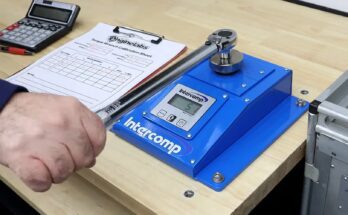Again and again, our world has churned out innovative, life-changing inventions. But even the greatest inventions ever made aren’t completely perfect. For example, take the internal combustion engine. In the transportation realm, the development of the gasoline combustion engine was the gateway for wide-scale automobile production. This invention of efficient land transportation led to greater prosperity and standards of living for millions of people.
Nevertheless, combustion engines have their own systematic flaws—and time and further innovation have allowed individuals to invent faster, better, and more fuel-efficient engines. This is where the automotive turbocharger comes into play. Turbochargers are must-have revolutionizers of powerful diesel and gas engine output. To provide a bit of background, let’s examine closer a brief history of turbocharged engine technology.
Turbocharging Technology: The First Patent
The inception of the turbocharger began with Swiss engineer Dr. Alfred Büchi, a man striving to make combustion engines greater efficient. In 1905, Dr. Buchi proposed the initial prototype of a turbocharged engine. The idea was to boost engine power and torque output, minimize emissions, and produce cost savings. His ideas weren’t well taken to well at first. However, his patent laid out a foundation for later applications to revolutionize engine efficiency.
Turbo Technology: The War Years
Next up on a brief history of turbocharged engine technology, we’ll discuss the war years. During the build-up to WWII, engineers sought out solutions for powering military crafts. Engineers were drawn to the efficiency of turbocharged applications and utilized turbo-supercharging on diesel engines operating for longer periods of time, such as trains, ships, and especially airplanes at high altitudes. The evolving idea to use a combustion engine’s exhaust energy to drive a turbine created a remarkable forced induction system. More versatile applications were sure to follow.
Turbo Tech: Arriving At Main Street
Post-war, the prevalence of turbocharger technology steered engineers to experiment with everyday automotive applications. Things quickly sprung together, and home-built hotrods and race cars sporting turbochargers came into the picture in the 50s and throughout the 60s. Then, the first commercially available turbocharged car on the American market came from GM. The Jetfire turbo-rocket V8 engine wasn’t an instant success, but greater turbocharged advancements arrived in the 70s and 80s to improve reliability and maintenance costs.
Essentially, Porsche rewrote the rulebook, while BMW brought turbo back stateside. These days, turbocharged engines are common sights everywhere, providing automakers and drivers alternatively eco-boosting engine power. For car enthusiasts, no modern-day turbocharged vehicle is complete without a turbocharged exhaust system to take engine performance to the next level. From racecars to streetcars, there’s no telling the ultimate power and potential of the turbo engine. Electric battery-assisted force induction engines may even be coming soon to a vehicle near you.
Additional Resources:
Scooters
Tesla
Elon Musk



